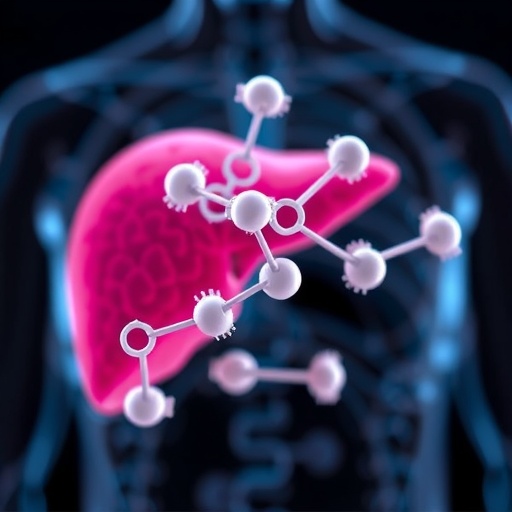In a pivotal advancement in environmental health research, scientists at the University of Gothenburg have uncovered that certain medications can significantly accelerate the elimination of per- and polyfluoroalkyl substances (PFAS) from the human body. These findings, published in the esteemed journal Environment International, shed new light on potential therapeutic strategies to mitigate the burden of PFAS accumulation, a class of persistent environmental toxins known for their bioaccumulative nature and prolonged biological half-lives.
PFAS compounds have longtime been recognized as pollutants with alarming resistance to biodegradation, often described as “forever chemicals” due to their stability and persistence in environments and biological systems. Their presence in drinking water sources has become a matter of urgent public health concern globally, with documented links to various diseases such as cancer, immune dysfunction, and metabolic disorders. The investigation by researchers from the Sahlgrenska Academy builds upon this growing body of knowledge by interrogating the pharmacokinetics of PFAS elimination influenced by pharmaceutical interventions.
The research took place against the backdrop of a unique environmental exposure scenario in Ronneby, Blekinge, Sweden. In this locale, decades-long use of aqueous film-forming foam (AFFF) at an Air Force facility led to significant contamination of municipal drinking water with high PFAS concentrations. The contamination discovery in 2013 prompted immediate action, including replacement of the tainted water supply, yet the prior exposure left many residents with elevated serum PFAS levels, providing a critical population for studying elimination dynamics.
One intriguing aspect of PFAS elimination is its considerable inter-individual variability, where some individuals clear these substances slowly over many years while others exhibit faster decline, a phenomenon that has perplexed scientists due to poorly understood underlying mechanisms. The current study set out to determine if pharmacological agents could modulate bodily clearance rates and reduce the long-term internal burden of PFAS.
A cohort of ten participants, aged 25 to 47, underwent a rigorous experimental protocol involving controlled administration of medications known to bind bile acids and influence enterohepatic circulation. In a cross-over design, subjects alternated between 12-week periods of medication administration and no-treatment phases, serving as their own controls to ensure the internal validity of comparisons.
Two agents demonstrated remarkable efficacy: cholestyramine, a bile acid sequestrant previously implicated in facilitating PFAS excretion by Danish researchers, and its pharmacological cousin, colesevelam, for which this activity is newly documented. These drugs act by interrupting the reabsorption of bile acids and structurally related compounds, enhancing fecal elimination. The study showed up to a 40% reduction in serum concentrations of at least one PFAS compound during treatment periods—a striking contrast to the minimal decline observed without medication.
Lead investigator Axel Andersson emphasized that while the acceleration of PFAS elimination by these drugs is unequivocal, the critical question remains whether faster clearance translates into tangible health benefits. The complexity of PFAS toxicodynamics means that lowering blood concentrations may not directly correlate with immediate improvements in health status, necessitating further longitudinal studies to assess clinical outcomes.
Importantly, these findings underscore the potential utility of bile acid sequestrants as adjuncts in toxicological management of PFAS exposure. However, cautious appraisal is warranted, particularly weighing potential side effects and ensuring that therapeutic benefits ultimately outweigh risks. The pharmacological approach might be especially relevant for individuals with exceptionally high PFAS burdens due to environmental contamination.
This research not only confirms and extends prior findings from Denmark but also introduces colesevelam as a promising candidate for accelerating PFAS clearance. The implications span environmental medicine, toxicology, and pharmaceutical sciences, opening a new avenue for mitigating the public health impact of persistent organic pollutants.
On a broader scale, these results contribute to the growing imperative of translating environmental research into actionable medical interventions. Given the ubiquity of PFAS contamination and its persistence in populations worldwide, elucidating and harnessing pathways for accelerated detoxification is of paramount significance for global health.
To conclude, while the elimination of PFAS from the human body is notoriously protracted, innovative pharmacological strategies demonstrate promising potential for enhancing clearance rates. Continued multidisciplinary research efforts integrating toxicology, pharmacology, and epidemiology will be crucial in determining the real-world effectiveness of these interventions and in guiding public health policies aimed at reducing PFAS-related disease burden.
Subject of Research: People
Article Title: Serum, urinary and fecal concentrations of perfluoroalkyl substances after interventions with cholestyramine/colesevelam and probenecid – cross-over trials in Ronneby, Sweden
News Publication Date: 19-Sep-2025
Web References: 10.1016/j.envint.2025.109794
Image Credits: Photo: Emelie Asplund, Göran Petersson
Keywords: PFAS elimination, cholestyramine, colesevelam, bile acid sequestrants, environmental toxins, pharmacokinetics, persistent organic pollutants, Ronneby contamination, aqueous film-forming foam, environmental health, toxicology, human exposure
Tags: aqueous film-forming foam contaminationbioaccumulative chemicalscancer and PFAS exposuredrinking water contaminationenvironmental health researchimmune dysfunction and PFASperfluoroalkyl substancespersistent environmental toxinsPFAS elimination medicationspharmacokinetics of PFASpublic health concern PFAStherapeutic strategies for PFAS





